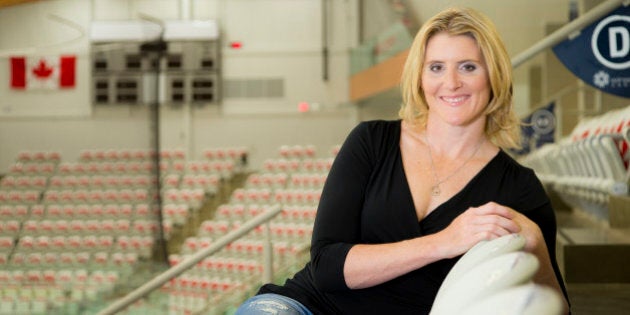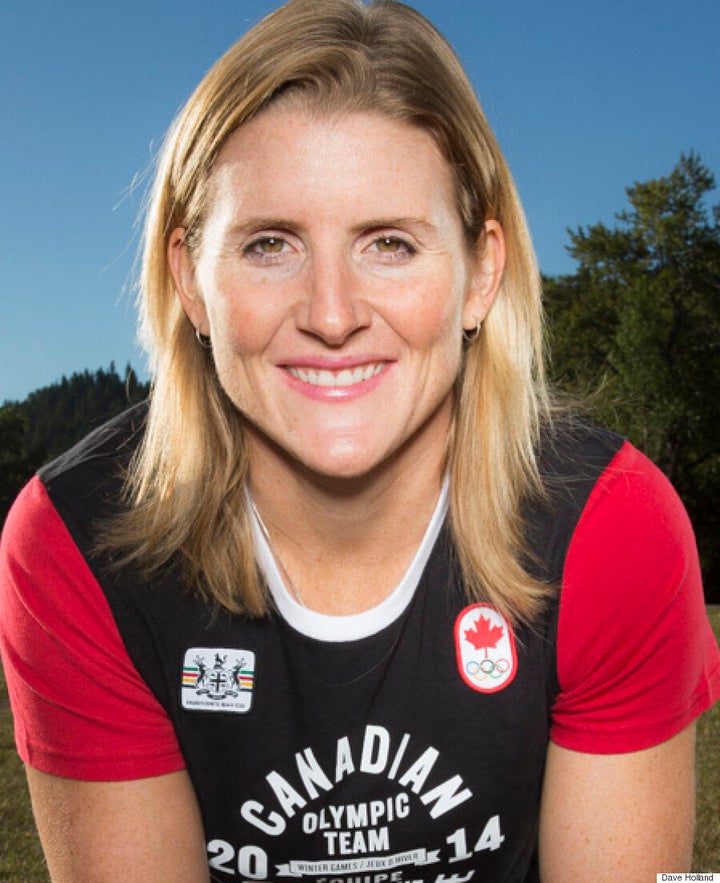
Four Olympic gold medals, one silver medal and seven golds from the World Championships. These are just some of the wins the longest serving player on the Canadian Women's National Hockey Team has collected in her career.
But Hayley Wickenheiser’s achievements aren’t a result of luck. It’s the reward for years of smart play, healthy living and determination.
In partnership with Robax, we sat down with the seasoned athlete to talk about the state of women's hockey and what future generations of hockey players can do to engage in safe play.
*This interview has been edited for length
You've been on hockey's vanguard in many ways over the years, from participating in all-boys hockey schools, to being the first female position player in a men's professional league. What lessons have you learned breaking down those barriers?
I've learned that society likes to put things and people in boxes. We're not very open (to) people who push the envelope and try new things. But in order to change the world that's exactly what you have to do. If I didn't do it, and if the women before me didn't do it, it would never be done.
Women's hockey has evolved tremendously in the last two decades. What has it looked like being on the frontline?
The game has come a very long way. As much as we talk about Canada and the U.S., the two teams in the world who are leading the game, the rest of the world has also improved dramatically. So what needs to continue to happen is that federations in other countries need to continue to believe in and invest in the women's game as much as we do here in North America.

For young people interested in pursuing hockey professionally, what are some valuable things they should know?
The first thing is watching hockey -- you can learn a lot just by watching the game. The second thing is doing the work when no one is watching. You don't need an organized practice on the ice to train. You can be on the driveway, at the outdoor rink or in your basement fooling around and trying different things.
What do all of us — players, coaches, parents, fans — have to do to build in that concern for safety in hockey from an early age?
The biggest thing is educating kids about respect in the game. If kids respect each other when they play, they're less likely to hit each other when they're in a compromised position. There's a way to play the game really hard and intense without seeking to hurt someone.
Hockey's always going to be a fast and chaotic sport, but what's the most important thing a player should do to play, and stay, safe on the ice?
Head up all the time. Understanding that if you are going into the boards to keep your head up, never turtle your head down and duck. That's when you can get your spinal injuries and (other) serious injuries.
Back pain is a common injury in hockey. What advice do you have for people who experience back pain?
Back pain is the worst. It’s debilitating and frustrating and it can really interfere with life. My advice to people who experience back pain is seek out a really good medical team of people who can help you manage the pain. Don't wait for your back to seize and get tight to get on it, back health has to be a daily routine. Having a good core/stability program coupled with soft tissue therapy, water therapy is really healthy. Don't live in pain, the quicker you can get on top of symptoms (the better). Lastly, don't just do nothing, movement is medicine and even the slightest movement can really help with healing.
Wickenheiser aims to play in the 2018 Winter Games in Pyeongchang, South Korea. But on top of that, the decorated athlete is finishing her masters degree in medical science at the University of Calgary and is working towards a career in medicine.
Robax not only stops pain but also reduces back spasms by relaxing tight muscles. Proudly made in Canada. We have your back.
This article may contain information related to exercise and fitness and/or general wellness information. It is not intended as a substitute of any kind for professional medical advice, diagnosis or treatment of a qualified professional as required. Speak to your healthcare professional before making any changes to your lifestyle, or beginning or discontinuing any course of treatment. Never disregard professional medical advice or delay in seeking it because of something you have read in this article.